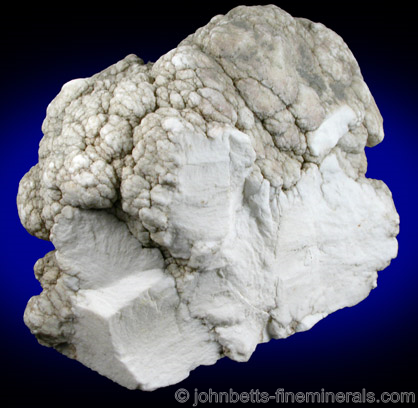The Mineral howlite

Howlite is most often available to collectors in tumbled and polished form as an inexpensive
stone. Its white color is easily dyed, and this can be done to resemble Turquoise when dyed a greenish-blue color. Howlite is often used as a cheap substitute
for Turquoise, and some dishonest dealers label dyed Howlite as
Turquoise without informing their sellers about this.
Howlite is named for its discoverer, Henry How, a Canadian geologist from Nova Scotia.
Chemical Formula
Ca2B5SiO9(OH)5
Color
White, commonly marked with black, gray, or brown intersecting vine-like or skin-like veins
Crystal System
Monoclinic
Crystal Habits
In large nodules and masses, and in fragments of these. Nodules often resemble cauliflower heads. Crystals, which are tabular, are very small and usually clustered together. They are found in only one region in the Canadian Province of Nova Scotia, where they form on large nodules. Also scaly and earthy.
Uses
The attractive intersecting veins in Howlite make it useful as an ornamental stone. It is used as gemstone for beads and is often tumbled and sold to amateur collectors. When dyed blue it is used as an inexpensive substitute for Turquoise.
Noteworthy Localities
Howlite occurs at many evaporation deposits in southern California as huge nodules. Notable areas include Tick Canyon (near Saugus), Lang, Los Angeles Co.; Dagget, San Bernardino Co.; Death Valley, Inyo Co; and Boron, in the Kramer District, San Bernardino Co. Howlite also occurs in Nova Scotia, Canada, in Bras D'Or Lake off Cape Breton Island; and near Windsor, Hants Co. Both these localities are known for their tiny tabular crystals on large nodules, and they are the only occurrences to date where visually crystallized examples of this mineral occur.
Other significant Howlite localities are the Muddy Mountains, Clark Co., Nevada; and the Bigadic Mine, Marmara Region, Turkey.
Common Mineral Associations
Borax, Ulexite, Colemanite, Anhydrite
Distingushing Similar Minerals
Datolite - Greater hardness, found in different mineral environment, often occurs in a greater color variety.
Bakerite - Greater hardness.